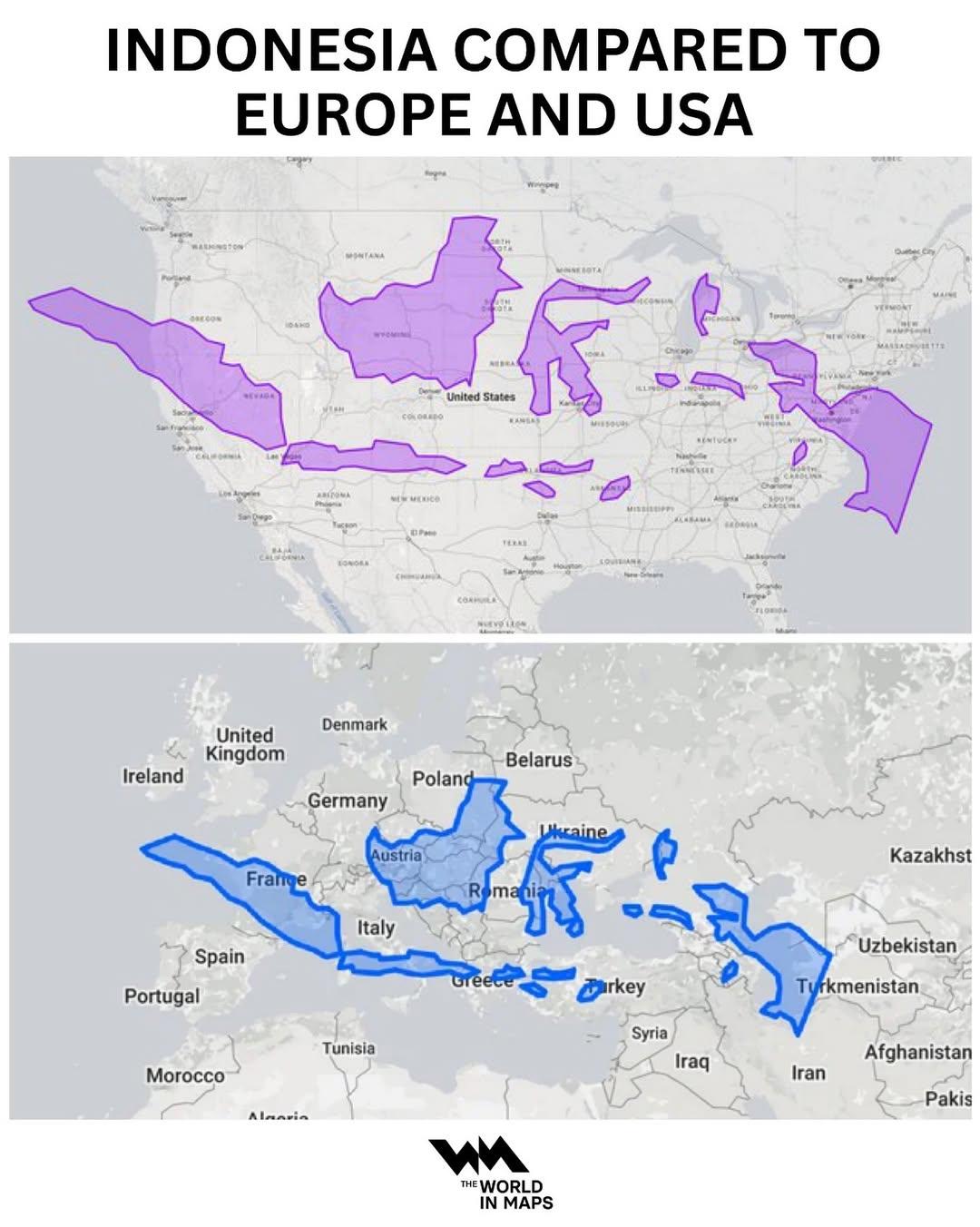Indonesia Population Density Map Compared to Europe and USA


Alex Cartwright
Senior Cartographer & GIS Specialist
Alex Cartwright is a renowned cartographer and geographic information systems specialist with over 15 years of experience in spatial analysis and data...
Geographic Analysis
What This Map Shows
This map provides a comparative visualization of population density in Indonesia relative to Europe and the USA. By illustrating how many people live in a given area, the map highlights significant differences in population distribution across these regions. It effectively showcases the concentration of people in urban centers versus rural areas, revealing insights into demographic trends, urbanization, and regional development.
Deep Dive into Population Density
Population density is a vital indicator that affects everything from urban planning to resource allocation. In Indonesia, the world's fourth most populous country, the distribution of its inhabitants is heavily skewed toward certain areas, particularly Java. Java alone is home to over half of the nation's population, making it one of the most densely populated islands in the world. With cities like Jakarta, which boasts a staggering population density exceeding 14,000 people per square kilometer, it’s clear that urban areas are not only crowded but also face unique challenges such as traffic congestion and pollution.
Interestingly, the contrast between Indonesia’s densely populated regions and its vast rural areas is stark. Many islands in Indonesia, such as Sumatra and Kalimantan, have sprawling landmass but significantly lower population densities. This distribution can be attributed to several factors, including economic opportunities, accessibility, and historical migration patterns.
Now, when we draw comparisons with Europe and the USA, several patterns emerge. Europe, known for its historical urban centers, also displays high population densities, particularly in countries like Monaco, the Netherlands, and Belgium. For instance, cities such as Paris and London have densities that rival Jakarta, showcasing a European trend of urbanization that mirrors Indonesia's.
On the other hand, the USA presents a different picture. While cities like New York and San Francisco have high population densities, much of the country's land area is characterized by lower densities, especially in the Midwest and South. This reflects a cultural preference for suburban living, where larger housing units are more common than in densely packed urban centers.
What’s fascinating is that while Indonesia’s population is growing rapidly, Europe has seen more stable or declining population growth in many areas. This has significant implications for urban planning and resource management in both regions. As Indonesia grapples with challenges of rapid urbanization, Europe must manage aging populations and dwindling workforce numbers in certain areas.
Regional Analysis
When we break down the map by region, it’s evident that Indonesia's population density is predominantly influenced by geography and economic factors. Java, with its fertile land and economic opportunities, attracts people from across the archipelago. In contrast, regions like Papua experience much lower population density due to challenging terrains and less economic development.
In Europe, the population density varies widely. For example, Scandinavian countries like Sweden and Norway have large land areas but comparatively low population densities, reflecting a different lifestyle and societal structure. Conversely, cities in the UK and Germany, such as London and Berlin, showcase high densities similar to those of Java. This regional analysis emphasizes how historical, cultural, and economic factors shape population distribution.
Moreover, the USA's population density is often concentrated along the coasts and in a few major metropolitan areas. Cities like Los Angeles and Chicago are significantly denser than vast stretches of the country, where rural living is the norm. Understanding these variations is crucial for urban planners, policymakers, and businesses looking to expand or develop in these regions.
Significance and Impact
Understanding population density is essential for multiple reasons. It influences everything from infrastructure development to healthcare delivery and education. In Indonesia, the rapid urbanization presents challenges such as housing shortages and infrastructure strain. How will the country manage its urban expansion while maintaining quality of life for its citizens?
In Europe, the implications of population density relate to aging populations and economic sustainability. As some areas face declining numbers, the workforce shrinks, prompting discussions about immigration and labor policies.
In the USA, population density impacts regional policies and economic opportunities. As urban centers continue to grow, the need for affordable housing and efficient public transportation becomes increasingly vital.
Current trends indicate that the global population will continue to urbanize, with projections suggesting that by 2050, nearly 68% of the world’s population will live in urban areas. This emphasizes the importance of understanding and addressing the challenges associated with population density today to prepare for a more urbanized tomorrow.
Visualization Details
- Published
- August 9, 2025
- Views
- 108
Comments
Loading comments...